One dot = 25 people
Color is based on race:
White = pink
Black = blue
Latino = orange
Asian = green
San Antonio has a majority white and Latino population. While there is still a division between the two, we can see that the two races are still pretty integrated with each other.
(Click for a larger size.)
Washington D.C. has a clear line between white and black, but there are still some areas in the city where colors are blended, marking more racially integrated areas.
Detroit, however, is very obviously segregated, with very little racial integration. According to the website, "the infamous Eight Mile beltway... serves a precise boundary for the city's black and white populations."
It's no surprise that the San Francisco bay area is one of the most racially integrated cities.
New York City, known for its rich cultural communities, is very divided, but according to the website, "the sheer number of people in those areas means that the boundaries become intensely rich areas of cross-cultural ferment."
And our own city of Los Angeles, widely recognized to be very racially and culturally diverse, shows off how the homogenous white race isn't the majority here.
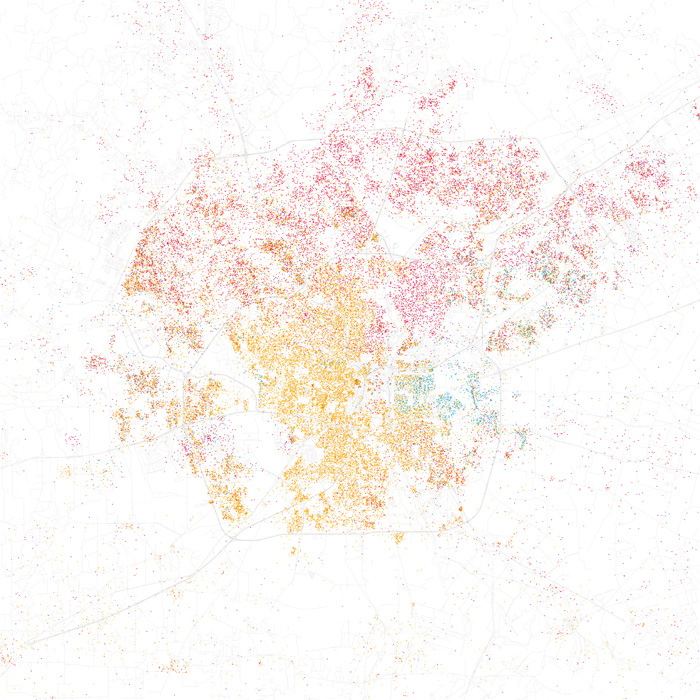
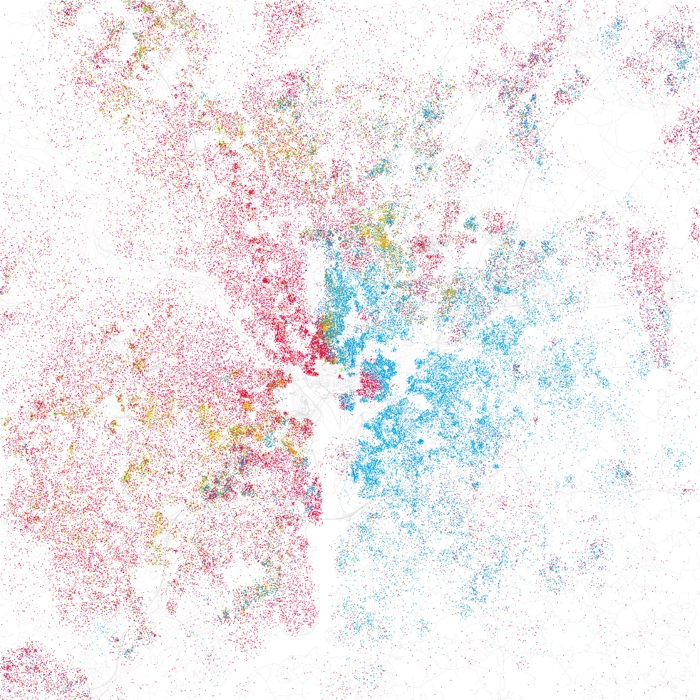

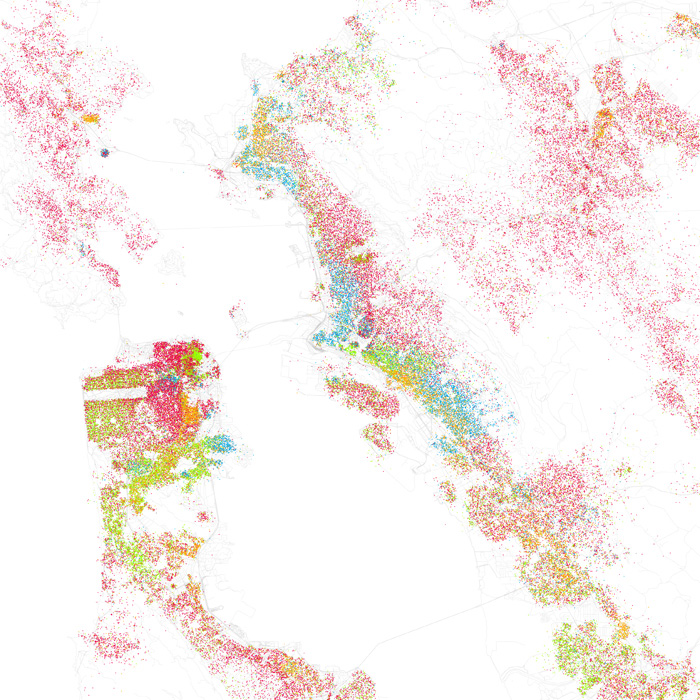
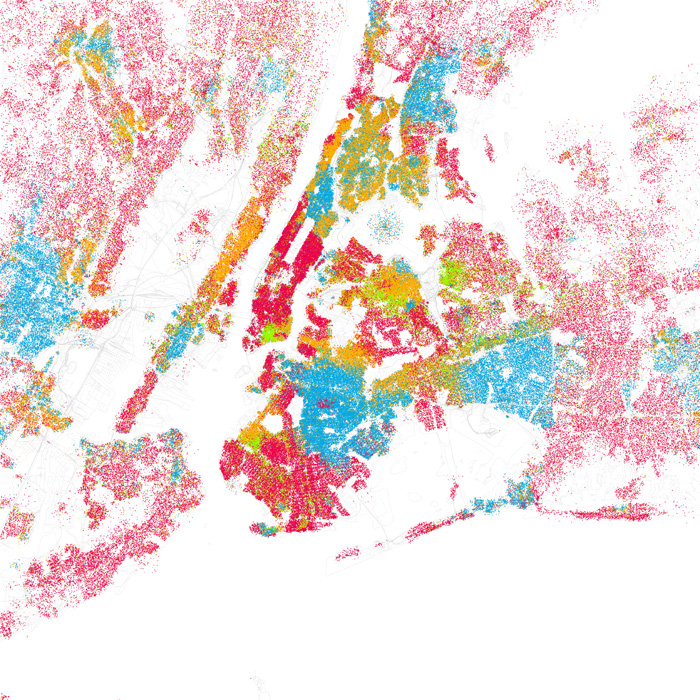
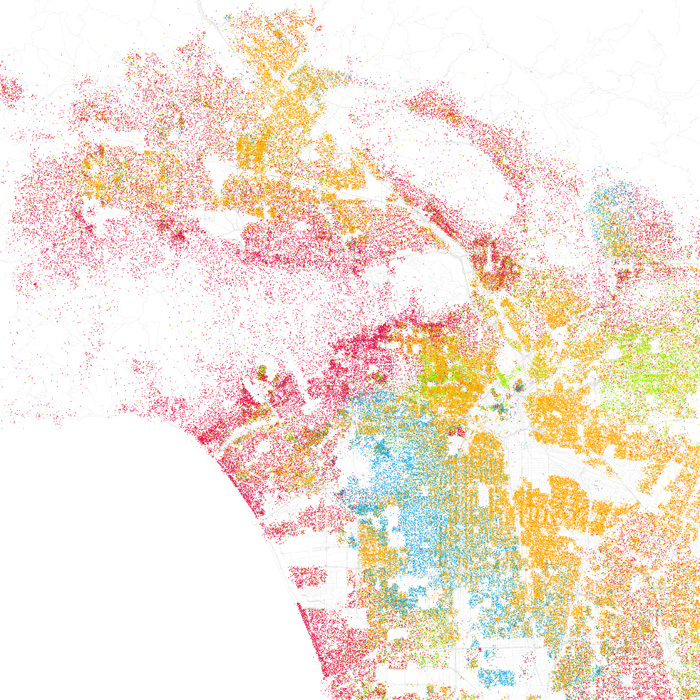
This is an interesting application of what is known as Geographical Information Systems or GIS and visualization. It connects geographically based data with other information (i.e. racial categorization) to graphically demonstrate how, in this example, urban settings are distributed by race.
ReplyDeletethis is cool. they'd make good dorm room/ class room wall art
ReplyDeleteThis is something that is noticed by many people, but not many atempt to do aything to try and change this segregation. I personally am part of this distribution by race because I live in a neighborhood where the entire population is Latino and African American. I find it appalling how cacausians are afraid to enter East Palo Alto and because of the huge Latino and Africa American population, East Palo Alto has a bad reputation and no one seems to try and change this segregation. I would love to see more diversity in my hometown, but I also understand that it has been this way for a long time and it will also take time for this racial segregation to change.
ReplyDelete